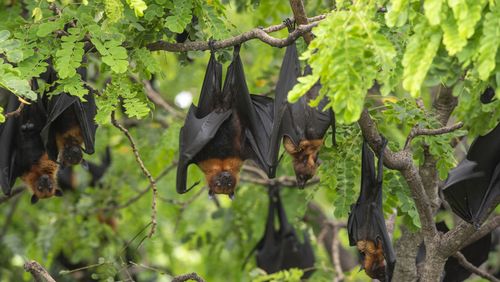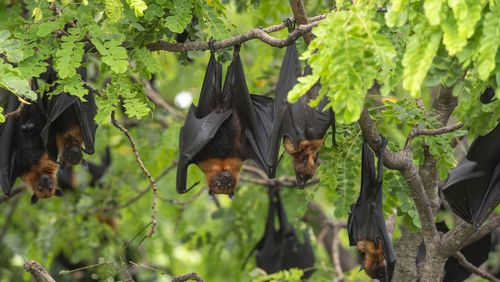Share this @internewscast.com
In this recent investigation, scientists examined the kidneys of 142 bats spanning ten species, all collected over a four-year period from five regions in Yunnan province.
Using advanced genetic sequencing, the team found 22 viruses â 20 of them never seen before.

Of particular concern were the discovery of two new henipaviruses, belonging to the same genus as nipah and hendra viruses, notorious for their high mortality rates in humans.
The henipaviruses were found in fruit bats living near orchards close to human villages.
Given that henipaviruses are transmissible through urine and were located in the bats’ kidneys, the research highlights the potential threat of infected fruit and the possibility of these viruses crossing over to humans or livestock.

University of Sydney wildlife disease ecologist and veterinarian Dr Alison Peel said while the discovery was “concerning”, it was not yet known if the new viruses could infect humans.
“We have other examples of close evolutionary cousins to hendra and nipah that appear not to be of any concern for spillover, so there will need to be some more laboratory studies on these new viruses to determine the actual risk,” she said.
Peel said the link between virus-carrying bats and fruit orchards in China provided a lesson to Australia.

“Our research on hendra virus spillover in Australia has demonstrated clear links between habitat destruction, loss of natural food, and increased spillover risk â so this may also be the case in China,” she said.
“Rather than focusing on bats as the problem, we’ve also shown evidence that protecting and restoring bat food sources is an effective and sustainable solution.”
Associate Professor Vinod Balasubramaniam from Monash University warned that the new viruses could spread swiftly from China to Australia.
“The similarity between Australian rural environments and Yunnan’s orchards near human settlements stresses the urgency of intensified surveillance and biosecurity measures,” he said.
“Global connectivity means an outbreak in China could swiftly reach Australia, emphasising the need for robust local monitoring strategies, particularly targeting bat kidneys, a novel insight provided by this study.”








